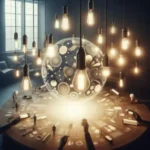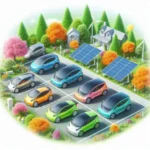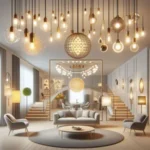In an era where sustainability and energy efficiency are at the forefront of our daily choices, the humble light bulb has undergone a remarkable transformation.
Gone are the days of standard incandescent bulbs; today, a dazzling array of options exists that not only illuminate our spaces but also contribute to a healthier planet. From the warm glow of LED lights to the vintage charm of Edison bulbs, each type of light bulb offers unique benefits that cater to various needs and preferences. In this comprehensive guide, we’ll explore the different types of light bulbs available, delve into their distinctive features, and highlight the advantages they bring to your home and lifestyle. Whether you’re looking to reduce your energy bills, enhance your décor, or simply brighten your living space, understanding the benefits of these bright choices will empower you to make informed decisions that shine a light on both style and sustainability.
1. Introduction to Light Bulbs: An Overview
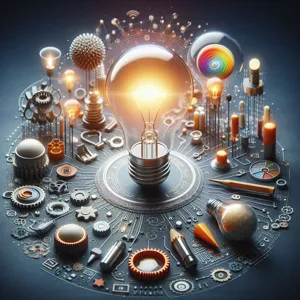
When it comes to illuminating our homes, workplaces, and public spaces, light bulbs play an essential role in our daily lives. They come in a variety of shapes, sizes, and technologies, each designed to serve specific needs and preferences. In this introductory section, we will explore the fascinating world of light bulbs, shedding light on their evolution, types, and the benefits they offer.
From the warm glow of incandescent bulbs that have graced our living rooms for over a century to the energy-efficient LED options rapidly becoming the standard in modern lighting, the choices are vast and varied. Incandescent bulbs provide a cozy ambiance, perfect for creating a relaxing environment, while compact fluorescent lamps (CFLs) offer greater efficiency, consuming less energy and lasting longer than their incandescent counterparts.
However, it’s the latest generation of light bulbs—LEDs—that truly revolutionize the lighting landscape. With their remarkable longevity, lower energy consumption, and versatility in design, LEDs have emerged as the go-to choice for environmentally conscious consumers looking to reduce their carbon footprint while still enjoying vibrant light options.
As we delve deeper into the different types of light bulbs, we’ll examine their unique characteristics and advantages, helping you make informed decisions about which lighting solutions best fit your lifestyle and aesthetic preferences. Whether you’re illuminating a cozy reading nook, brightening your workspace, or enhancing outdoor security, understanding the various light bulb options available can lead to brighter choices for your home and beyond.
2. Traditional Incandescent Bulbs: Pros and Cons
Traditional incandescent bulbs have been a staple in households for over a century, known for their warm glow and familiar aesthetic. These bulbs work by passing electricity through a thin filament, which heats up and produces light. While they may evoke a sense of nostalgia, it’s essential to weigh their pros and cons to determine if they are the right choice for your lighting needs.
**Pros:**
One of the most appealing aspects of incandescent bulbs is the quality of light they emit. The warm, inviting glow they provide creates a cozy atmosphere, making them ideal for living spaces and bedrooms. This type of lighting is particularly effective in accentuating colors and textures, adding a touch of warmth to any environment.
Another advantage is their affordability. Incandescent bulbs are typically less expensive to purchase upfront compared to their more energy-efficient counterparts. They also come in a variety of shapes and sizes, making them versatile for different fixtures and decor styles.
Additionally, incandescent bulbs light up instantly without any warm-up time, offering immediate brightness—perfect for situations where you need light right away.
**Cons:**
Despite their charm, incandescent bulbs have significant downsides. The most notable is their energy efficiency (or lack thereof). These bulbs convert only about 10% of the energy they consume into light, with the remaining 90% wasted as heat. This inefficiency not only leads to higher electricity bills but also contributes to a larger carbon footprint.
Moreover, incandescent bulbs have a relatively short lifespan, typically lasting around 1,000 hours. This means they require more frequent replacements compared to LED or CFL bulbs, which can last anywhere from 10,000 to 25,000 hours. The need for frequent replacement can add up both in cost and in waste, which may not align with environmentally conscious choices.
In summary, while traditional incandescent bulbs offer a warm ambiance and immediate brightness at a low initial cost, their inefficiency and shorter lifespan make them less desirable in the long run. As you explore your lighting options, consider how these factors play into your overall energy goals and aesthetic preferences.
3. Compact Fluorescent Lamps (CFLs): Energy Efficiency Explained
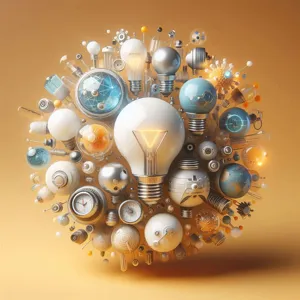
Compact Fluorescent Lamps (CFLs) have revolutionized the way we think about lighting, offering an eco-friendly alternative to traditional incandescent bulbs. These spiral-shaped fixtures are designed to be more energy-efficient, using up to 75% less electricity while producing the same amount of light. But how does this energy efficiency work?
At the heart of a CFL is a small amount of mercury vapor, which, when electrified, emits ultraviolet light. This ultraviolet light then interacts with a phosphor coating on the inside of the bulb, creating visible light. This process is significantly more efficient than the heat-based method used by incandescent bulbs, where much of the energy is wasted as heat rather than converted to light.
Choosing CFLs not only reduces your energy consumption but also lowers your electricity bills, making them a wise investment for both your wallet and the environment. In addition to being energy-efficient, CFLs have a longer lifespan, lasting up to ten times longer than traditional bulbs. This longevity means fewer replacements and less waste, further contributing to their sustainability.
Moreover, CFLs come in a variety of color temperatures, allowing you to select the perfect ambiance for any space—whether it’s the warm glow that mimics a cozy sunset or the bright daylight effect ideal for tasks requiring focus. While they may require a brief warm-up time to reach their full brightness, the benefits far outweigh this minor inconvenience.
In summary, Compact Fluorescent Lamps are an excellent choice for those looking to reduce their carbon footprint without sacrificing light quality. By making the switch to CFLs, you not only embrace a more sustainable lifestyle but also enjoy the financial perks that come with energy efficiency.
4. Light Emitting Diodes (LEDs): The Future of Lighting
Light Emitting Diodes (LEDs) have rapidly emerged as a transformative force in the lighting industry, heralding a new era of energy efficiency and sustainability. Unlike traditional incandescent bulbs that generate light through heating a filament, LEDs utilize a semiconductor to convert electricity into light, resulting in a significantly lower energy consumption—up to 80% less than their incandescent counterparts. This remarkable efficiency not only lowers electricity bills but also reduces the environmental impact associated with energy production.
One of the standout benefits of LEDs is their impressive lifespan. While a standard incandescent bulb may last around 1,000 hours, LED bulbs can shine brightly for over 25,000 hours or more, making them a cost-effective solution in the long run. This durability means fewer replacements, which translates to less waste in landfills and a smaller carbon footprint.
Moreover, LEDs are incredibly versatile, available in a variety of colors and brightness levels, allowing homeowners and businesses to customize their lighting to suit any mood or setting. Whether you’re looking for warm white light to create a cozy atmosphere or vibrant colors for festive occasions, LEDs can deliver.
Beyond functionality, LEDs also boast safety advantages. They generate very little heat during operation, reducing the risk of burns or fire hazards, and are free from hazardous materials like mercury, which is commonly found in fluorescent bulbs.
In an age where sustainability and energy efficiency are paramount, LEDs stand out as the future of lighting. With their myriad benefits, including longevity, versatility, and low environmental impact, it’s clear that making the switch to LEDs is not just a smart choice—it’s a bright one. Embrace this innovative lighting solution, and not only will you illuminate your spaces effectively, but you’ll also contribute to a greener planet.
5. Halogen Bulbs: A Bright Alternative

Halogen bulbs are often hailed as a bright alternative to traditional incandescent bulbs, offering energy efficiency and a crisp, white light that can elevate any space. Unlike their incandescent counterparts, which derive their light from heating a filament, halogen bulbs utilize a halogen gas that recycles heat within the bulb, resulting in a light that is not only brighter but also longer-lasting.
One of the standout features of halogen bulbs is their ability to produce an intense and focused beam of light, making them ideal for task lighting in kitchens, workspaces, and reading nooks. Their natural color rendering index (CRI) closely mimics daylight, bringing out the true colors of objects and enhancing the overall ambiance of a room. Whether you’re illuminating your artwork, showcasing your culinary masterpieces, or simply creating a cozy atmosphere, halogen bulbs deliver exceptional clarity and warmth.
In addition to their superior lighting quality, halogen bulbs are compact in design, allowing for versatile placement in various fixtures—from recessed lighting to decorative pendant lamps. They also reach full brightness instantly, eliminating the frustrating wait time that can sometimes accompany energy-saving options like CFLs and LEDs.
Moreover, halogen bulbs are more energy-efficient than traditional incandescent bulbs, using about 30% less electricity while still providing that familiar warm glow. This efficiency translates to savings on your energy bill, making them a wise choice for eco-conscious consumers looking to minimize their carbon footprint without sacrificing light quality.
However, it’s essential to consider that halogen bulbs can run hot during operation, so proper installation and usage are crucial for safety. With their striking brightness, excellent color rendering, and energy efficiency, halogen bulbs serve as a brilliant and practical lighting solution for any home or workspace. Embrace the brilliance of halogen lighting and transform your environment with its vibrant glow!
6. Smart Bulbs: The Rise of Smart Lighting Technology
In recent years, smart bulbs have emerged as a revolutionary innovation in the world of lighting, seamlessly blending convenience, efficiency, and technological advancement. These cutting-edge devices do more than just illuminate your spaces; they empower you to control your environment with the touch of a button or even the sound of your voice. With the integration of smart home technology, smart bulbs have rapidly gained popularity, and for good reason.
Imagine walking into your home and having the lights automatically adjust to your preferred brightness and color temperature based on the time of day or your mood. Smart bulbs can be programmed to create the perfect ambiance for any occasion—whether it’s a warm, cozy glow for movie night or bright, energizing light for a productive work session. Many models are compatible with home automation systems like Amazon Alexa, Google Assistant, or Apple HomeKit, allowing you to adjust your lighting settings hands-free.
But the benefits of smart bulbs extend beyond mere convenience. These bulbs are designed to be energy-efficient, consuming significantly less power than traditional incandescent bulbs while providing the same, if not better, level of brightness. This translates to lower energy bills and a reduced carbon footprint—an appealing prospect for environmentally conscious consumers.
Moreover, smart bulbs often come with a range of customizable features, including color-changing capabilities and dimming options. This versatility allows you to tailor your lighting to suit your specific needs and preferences, enhancing the overall aesthetic of your living space. Many models also offer scheduling functions, enabling you to program your lights to turn on or off at specific times, contributing to better home security by simulating occupancy when you’re away.
As the demand for smart home devices continues to rise, the market for smart bulbs is only expected to grow, with more brands and innovations emerging. By embracing this technology, you not only enhance your home’s functionality but also open the door to a more connected and efficient lifestyle. Whether you’re a tech enthusiast or simply looking to upgrade your lighting, smart bulbs represent a bright choice for modern living.
7. Understanding Color Temperature and Its Impact on Ambiance

Color temperature is a fascinating concept that plays a critical role in how we perceive our surroundings and the overall ambiance of a space. Measured in Kelvin (K), color temperature describes the hue of the light emitted by a bulb, influencing not only visibility but also the mood and functionality of a room. Understanding this can significantly enhance your lighting choices.
At the lower end of the color temperature spectrum, around 2700K to 3000K, you’ll find warm white light—often reminiscent of traditional incandescent bulbs. This cozy glow is perfect for creating inviting spaces, making it an ideal choice for living rooms, bedrooms, and dining areas where relaxation and comfort are paramount. It evokes a sense of warmth, fostering an atmosphere conducive to unwinding after a long day.
As you move up the scale to 3500K to 4100K, you enter the realm of neutral white light. This type of lighting strikes a balance between warm and cool tones, making it versatile for various settings. It’s an excellent option for kitchens and workspaces, where clarity and focus are essential. This range promotes alertness while still maintaining a welcoming feel.
For areas that require a more energetic and vibrant atmosphere, such as offices or retail environments, higher color temperatures—ranging from 5000K to 6500K—emit a cool, bluish-white light. This bright illumination mimics daylight, enhancing concentration and productivity. It’s particularly beneficial in spaces where attention to detail is critical, as it reduces eye strain and promotes alertness.
Incorporating the right color temperature into your lighting design can transform the essence of your home or workspace. By thoughtfully selecting bulbs based on their color temperature, you can create an ambiance that aligns perfectly with the intended use of each area, ultimately enhancing both comfort and functionality. So, whether you’re looking to unwind, focus, or engage customers, understanding color temperature is a vital step in illuminating your space with intention.
8. Choosing the Right Bulb for Different Spaces
Choosing the right bulb for different spaces in your home or office can significantly enhance both functionality and ambiance. Each area has its unique requirements, and understanding the nuances of light can help you create the perfect atmosphere.
In living rooms and bedrooms, where comfort and relaxation are key, consider using warm white LED bulbs. These bulbs emit a soft, inviting glow that promotes a cozy environment, perfect for winding down after a long day. Dimmers can also enhance this effect, allowing you to adjust the brightness to suit your mood or activity.
For kitchens and workspaces, bright white or daylight bulbs are ideal. These types of bulbs provide a crisp, clear light that makes tasks like chopping vegetables or reading documents much easier. Additionally, using bulbs with a higher Color Rendering Index (CRI) will ensure that colors appear more vibrant and true to life, which is especially important in areas where precision is critical.
In bathrooms, consider using bulbs that mimic natural daylight. This not only helps with grooming tasks but also creates a refreshing and energizing atmosphere. Remember to opt for moisture-resistant fixtures to ensure safety and longevity in these humid environments.
Finally, outdoor spaces benefit from robust and weather-resistant bulbs. LED floodlights or motion-sensor lights can enhance security while providing ample illumination for pathways and patios. Choosing the right light bulb can turn any space from mundane to magnificent, allowing you to tailor each room’s lighting to its specific purpose and mood. By thoughtfully selecting bulbs based on the unique needs of each area, you can create a harmonious and inviting environment throughout your home.
9. Environmental Impact of Various Light Bulb Types
As we become increasingly aware of our environmental footprint, the choice of light bulbs extends beyond mere brightness and style—it significantly impacts the planet as well. Different types of light bulbs present varying degrees of environmental benefits and drawbacks, making it essential for consumers to make informed choices.
**Incandescent Bulbs:** While these traditional bulbs are often favored for their warm glow and aesthetic appeal, they are notoriously inefficient. Incandescent bulbs convert a mere 10% of the energy they consume into visible light, with the remaining energy wasted as heat. This inefficiency not only leads to higher energy bills but also contributes to increased greenhouse gas emissions from power plants.
**Compact Fluorescent Lamps (CFLs):** A step up from incandescents, CFLs use about 70% less energy and can last up to ten times longer. However, they do contain a small amount of mercury, which poses environmental hazards if not disposed of properly. Fortunately, many recycling programs are now in place to ensure that used CFLs are handled responsibly, mitigating their potential negative impact.
**Light Emitting Diodes (LEDs):** Reigning supreme in the realm of eco-friendly lighting, LEDs are the champions of energy efficiency. Consuming 75% less energy than incandescent bulbs and lasting up to 25 times longer, LEDs significantly reduce energy consumption and waste. Moreover, they contain no toxic materials, making them an environmentally safe choice. The long lifespan of LEDs means fewer replacements, further reducing waste and the associated carbon footprint of manufacturing and transportation.
**Halogen Bulbs:** While they offer better efficiency than traditional incandescents, halogen bulbs still fall short of the energy savings provided by CFLs and LEDs. They emit a brighter light and have a longer lifespan compared to incandescents but still produce considerable heat and consume more energy than their more eco-friendly counterparts.
When considering the environmental impact of light bulbs, it’s clear that the choice is not just about illumination but about making responsible decisions that contribute to a healthier planet. By opting for energy-efficient bulbs like CFLs and especially LEDs, consumers can illuminate their spaces while minimizing their environmental impact, proving that bright choices can indeed lead to a brighter future for our planet.
10. Cost Comparison: Initial Investment vs. Long-term Savings
When considering the myriad options available in the world of light bulbs, one of the most crucial factors to weigh is the cost comparison between the initial investment and the long-term savings each type offers. At first glance, traditional incandescent bulbs seem to be the most budget-friendly choice, often available for just a few cents apiece. However, this initial affordability can be deceptive. Incandescent bulbs are notoriously inefficient, converting only about 10% of the energy they consume into visible light, while the rest is lost as heat. This inefficiency leads to higher energy bills over time, particularly in homes with extensive lighting needs.
In contrast, energy-efficient options such as compact fluorescent lamps (CFLs) and light-emitting diodes (LEDs) require a larger upfront investment but promise significant savings over their lifespan. A typical LED bulb, for instance, may cost anywhere from $5 to $15 initially, yet it can last up to 25,000 hours and consume up to 80% less energy than an incandescent bulb. This means that while you may spend more at checkout, the long-term savings on your electricity bill and the reduced frequency of replacements can result in a much lower total cost of ownership.
For example, if you replace ten 60-watt incandescent bulbs with ten 10-watt LED bulbs, you might spend $100 initially but save approximately $1,000 or more over the bulbs’ lifespan when considering energy costs alone. Moreover, the longevity of LEDs means fewer replacements and less waste, making them a more environmentally friendly choice as well.
In summary, while the initial price tag of energy-efficient bulbs might be higher, the long-term savings, combined with their durability and lower energy consumption, make them an investment worth considering. As you explore your lighting options, remember to look beyond the immediate costs and consider the bigger picture of your energy consumption and savings over time.
11. Health Considerations: Blue Light and Eye Strain
In our quest for optimal lighting solutions, one critical aspect often overlooked is the impact of different light sources on our health, particularly concerning blue light exposure. Blue light, emitted by many modern light bulbs—especially LEDs—has gained attention for its role in contributing to eye strain and disrupting our circadian rhythms. As we become increasingly reliant on screens and artificial lighting, understanding the effects of blue light becomes paramount.
Prolonged exposure to blue light can lead to digital eye strain, a condition characterized by symptoms such as dryness, irritation, and difficulty focusing. With the rise of remote work and increased screen time, many individuals find themselves feeling fatigued or experiencing headaches after long hours in front of their devices. This phenomenon is often exacerbated by the bright, harsh light emitted by traditional energy-efficient bulbs and certain LED fixtures that tend to emit higher levels of blue light.
To mitigate these health concerns, consider incorporating light bulbs designed with lower blue light emissions. For example, warm white LEDs or incandescent bulbs can create a softer ambiance that is easier on the eyes. Additionally, many manufacturers now offer specialized lighting options that filter out harmful blue light, providing a healthier environment for both work and relaxation.
Furthermore, being mindful of lighting in the evening can enhance your overall well-being. As the sun sets, opt for softer, warmer light sources that mimic natural light, aiding in the production of melatonin and promoting better sleep patterns. By making informed choices about the types of light bulbs you use, you can create a comfortable living space that supports both your visual health and your overall quality of life. In this age of artificial lighting, prioritizing your health through mindful lighting choices is not just beneficial—it’s essential.
12. How to Dispose of Light Bulbs Responsibly
When it comes to light bulb disposal, doing it responsibly is crucial for both environmental protection and public health. Different types of light bulbs require different disposal methods due to their unique compositions and potential hazards. Here’s a guide to help you navigate the process seamlessly.
**Incandescent Bulbs:** The traditional incandescent bulb is the easiest to dispose of. These bulbs can typically be thrown away in your regular trash, as they do not contain harmful materials. However, ensure the bulbs are cool and wrapped in a protective layer—like newspaper—before tossing them, as this prevents breakage that may pose a risk to sanitation workers.
**CFL Bulbs:** Compact Fluorescent Lamps (CFLs) are energy-efficient options that contain a small amount of mercury, making their disposal more complex. Never place them in the trash. Instead, seek out local recycling centers that accept CFLs. Many home improvement and hardware stores also offer recycling programs, allowing you to drop off used bulbs safely. Check your area’s hazardous waste disposal guidelines, as they may have designated collection days or locations.
**LED Bulbs:** Light Emitting Diodes (LEDs) are the most energy-efficient choice and have a long lifespan, but they also require responsible disposal. Currently, LED bulbs do not contain hazardous materials, so they can often be treated like regular trash. However, recycling is still recommended whenever possible. Look for electronic waste recycling programs in your community, as these facilities can help ensure that the components of LED bulbs are processed properly.
**Halogen Bulbs:** Similar to incandescent bulbs, halogen lights can typically be disposed of with regular household waste. However, it’s wise to check local regulations to ensure compliance, especially as some areas may have specific guidelines regarding glass waste.
Regardless of the type of bulb, always handle them with care to avoid breakage. If a bulb breaks, follow your local safety recommendations for cleaning up and disposing of broken glass. By taking the time to dispose of your light bulbs responsibly, you contribute to a healthier planet and promote sustainable practices in your community. Your commitment to responsible disposal reflects a growing awareness of our environmental impact, helping to foster a brighter, greener future for all.
13. Tips for Maximizing the Lifespan of Your Light Bulbs
When it comes to light bulbs, maximizing their lifespan not only saves you money but also reduces the frequency of replacements, contributing to a more sustainable home. Here are some practical tips to help you get the most out of your lighting solutions.
First and foremost, choose the right type of bulb for each fixture. For instance, LED bulbs are known for their longevity and energy efficiency, making them an excellent choice for frequently used spaces. In contrast, incandescent bulbs, while offering a warm glow, consume more energy and have shorter lifespans. By matching the bulb type to its intended use, you can significantly extend its life.
Another key tip is to avoid frequent on-and-off switching. Light bulbs, especially incandescent ones, undergo stress when they are turned on and off repeatedly. If possible, opt for dimmers or timers that allow for gradual ramping up and down of light, which can ease the strain on the bulb.
Proper installation is also crucial. Ensure that your bulbs are securely fitted in their sockets. Loose connections can lead to flickering and increased wear. Additionally, keeping bulb fixtures clean can help improve efficiency and heat dissipation. Dust and grime can accumulate over time, leading to overheating and reduced lifespan. A simple wipe with a damp cloth can make a significant difference.
Finally, consider the environment where your bulbs are used. Excessive heat can shorten the life of light bulbs, particularly LEDs. Make sure that fixtures are adequately ventilated and avoid placing bulbs in enclosed spaces unless they are specifically designed for such use.
By following these tips, you can enjoy brighter spaces for longer while being kind to your wallet and the environment!
14. Innovations in Lighting: Trends to Watch
As technology evolves at a breakneck pace, the world of lighting is not left behind. Innovations in lighting are rapidly transforming how we illuminate our spaces, presenting consumers with more options than ever before. Here are some trends to watch that are shaping the future of lighting and enhancing our daily lives.
**Smart Lighting Solutions**
One of the most significant trends in recent years is the rise of smart lighting. With the integration of Wi-Fi and Bluetooth technologies, smart bulbs allow users to control their lighting remotely through smartphones or voice-activated devices. These bulbs can change colors, dim or brighten, and even sync with music or movies, creating dynamic lighting experiences tailored to mood or occasion. Additionally, smart lighting systems can help save energy by allowing users to set schedules or turn off lights automatically when they leave a room.
**Energy-Efficient Options**
As sustainability becomes a critical focus for consumers, manufacturers are increasingly focused on producing energy-efficient lighting solutions. LED bulbs continue to dominate the market, using up to 80% less energy than traditional incandescent bulbs while providing a longer lifespan. Emerging technologies, such as organic light-emitting diodes (OLEDs), are also gaining traction due to their ability to produce a softer, more diffuse light while remaining energy-efficient. This trend not only helps reduce carbon footprints but also lowers electricity bills, making it a win-win for both the environment and consumers.
**Human-Centric Lighting**
Another exciting trend is the development of human-centric lighting, which emphasizes the impact of light on our health and well-being. research has shown that different light spectrums can affect our mood, productivity, and even sleep patterns. As a result, lighting designs are now being created to mimic natural daylight, adjusting color temperature throughout the day to enhance alertness during working hours and promote relaxation in the evening. This approach aligns with the growing awareness of the importance of mental health and overall wellness.
**Customized and Decorative Bulbs**
Gone are the days when light bulbs were merely functional. Today, decorative bulbs come in an array of shapes, sizes, and colors, allowing consumers to express their personal style through their lighting choices. Vintage-inspired Edison bulbs, playful globe designs, and artistic fixtures are just a few examples of how aesthetics are becoming an integral part of lighting innovation. This trend encourages creativity in home and commercial design, as people look for unique ways to enhance their spaces.
**Sustainable Materials**
Finally, as concerns about sustainability continue to rise, many manufacturers are exploring eco-friendly materials in their light bulb production. Innovations in recyclable and biodegradable materials are paving the way for more environmentally responsible lighting solutions. This trend not only appeals to eco-conscious consumers but also aligns with broader movements toward sustainable living.
In summary, the lighting industry is buzzing with innovations that are making our spaces more energy-efficient, healthier, and stylish. Staying informed about these trends will not only keep your home or business illuminated beautifully but also ensure that your choices reflect a commitment to sustainability and wellness. Whether you’re looking to upgrade your existing fixtures or explore the latest smart technologies, the future of lighting holds exciting possibilities that are worth exploring.
15. Conclusion: Making Informed Choices for Better Lighting
In conclusion, navigating the diverse world of light bulbs doesn’t have to be overwhelming; rather, it can be an enlightening experience that empowers you to make informed choices for your home or workspace. Understanding the differences between incandescent, LED, CFL, and halogen bulbs is essential in selecting the right type of lighting that meets your needs, preferences, and budget. Each bulb type offers unique benefits, from the warm ambiance of incandescent lights to the energy efficiency and longevity of LEDs.
As we become increasingly aware of our environmental impact, opting for energy-efficient lighting solutions like LEDs can significantly reduce energy consumption and lower utility bills, all while contributing to a more sustainable future. Additionally, considering factors such as brightness, color temperature, and the intended use of each space can further enhance your lighting experience, creating the perfect atmosphere whether you’re reading a book, hosting a dinner party, or simply unwinding after a long day.
By arming yourself with knowledge and carefully assessing your lighting needs, you can make brighter choices that not only illuminate your surroundings but also align with your lifestyle and values. So, as you venture into the realm of light bulbs, remember that the right choice can transform your space, elevate your mood, and illuminate your life in a myriad of ways.
In conclusion, choosing the right light bulb can significantly enhance both the ambiance and efficiency of your living or working space. As we’ve explored in this blog post, each type of light bulb—from the warm glow of incandescent to the energy-efficient LED—brings its own unique benefits tailored to different needs and preferences. By understanding the characteristics and advantages of each option, you can make informed decisions that not only illuminate your environment but also contribute to energy savings and sustainability. We encourage you to experiment with different types of bulbs to find the perfect lighting solutions that brighten your world while reflecting your personal style. Thank you for joining us on this illuminating journey—here’s to making brighter, smarter choices in your lighting endeavors!

